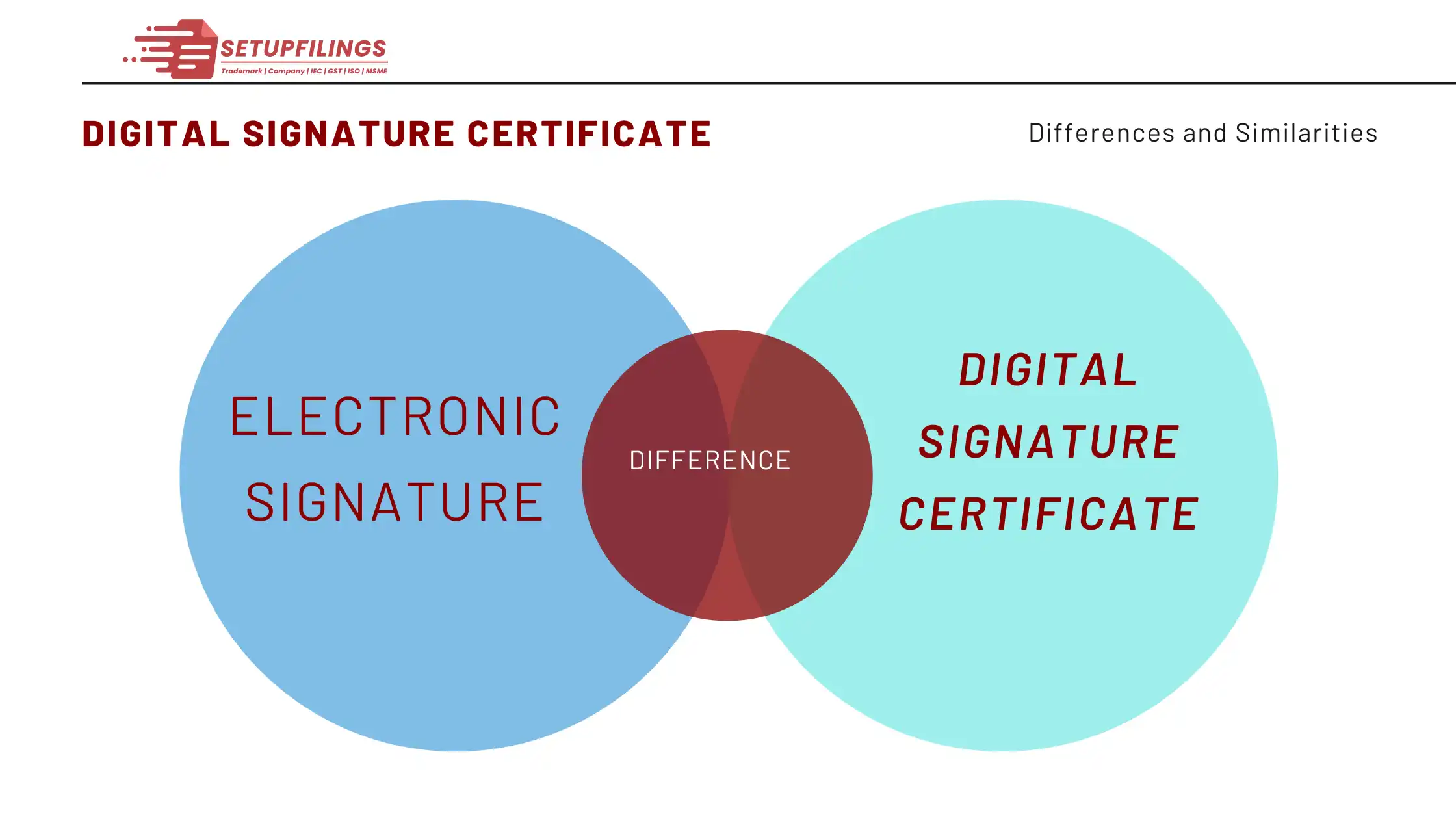
What is the difference between an electronic signature and a digital signature?
1. Electronic Signature:
An electronic signature is a digital version of a wet ink signature that is legally binding and secure but lacks code and standards. It can be a sign, picture, or method affixed to a communication or document to recognise and assent to its identification. When we merely need to validate a document, we utilise an electronic signature.
Because electronic signature validation is not done by any trusted certificate authority or trust service providers, it is not normally permitted. Electronic signatures are simpler to use than digital signatures, but they are less secure and trustworthy.
Advantages:
• Convenience: Because electronic signatures may be signed remotely from any place, people and corporations can sign papers without physically being there.
• Time-saving: Unlike traditional paper signatures, which involve mailing, scanning, or faxing, electronic signatures may be signed quickly.
• Economical: Electronic signatures may help firms save money on paper, ink, postage, and storage.
• Security: Encryption and authentication procedures can be used to safeguard electronic signatures, making it harder for unauthorised parties to obtain the signature.
Disadvantages:
• Legal recognition: Electronic signatures may not be legally recognised in all countries, thus it is important to examine the appropriate laws and regulations.
• Technical problems: Electronic signatures are susceptible to technical problems such as system failures, power outages, and hacker assaults.
• Technology reliance: Electronic signatures necessitate the use of technology, such as computers and internet connections, which might be an issue in locations with inadequate technical infrastructure.
2. Electronic signature:
Digital Signature is a safe signature that works with electronic signatures and relies on public key infrastructure, which implies it includes encryption standards. It is analogous to an electronic fingerprint that encrypts and identifies a person’s identity. When it comes to document security, we employ digital signatures.
Because digital signature validation is handled by trustworthy certificate authority or trust service providers, it is typically authorised. Digital signatures are favoured over electronic signatures because they are more secure and genuine.
Advantages:
• Legal recognition: In many countries, digital signatures are legally recognised, offering more confidence and validity to signed documents.
• Security: To safeguard the signature, digital signatures employ complex cryptographic algorithms, making it difficult for unauthorised parties to access or modify the signature.
• Non-repudiation: Because digital signatures are non-repudiable, the signer cannot refute their signature.
• Time-stamping: Digital signatures can contain a time-stamp, which keeps track of the date and time of signing.
Disadvantages:
• Complexity: When compared to electronic signatures, digital signatures might be more difficult to develop and use since they require specialised software and understanding.
• Cost: Due to the requirement for specialised software and hardware, digital signatures might be more expensive than electronic signatures.
• Technology reliance: Digital signatures necessitate the use of technology, which might be an issue in locations with poor technical infrastructure.
• Legal requirements: Additional legal requirements, such as the usage of certain certificates or compliance with certain legislation, may apply to digital signatures.
• Similarities:
> Both are used to sign electronic documents and confirm the signer’s identity.
> Both are substitutes for traditional ink signatures on paper documents.
> Both may be used for remote signature, which allows individuals and organisations to sign papers from anywhere in the world.
> When compared to traditional paper-based signatures, both can save time and money.
> Both may be safeguarded using encryption and authentication procedures, giving the signature more protection.
> Both can be used to meet legal requirements for document signing in various jurisdictions.
> Both may be used for a variety of purposes, including as commercial contracts, financial transactions, and legal papers.
> As more and more transactions and conversations are handled online, both have grown in popularity in the digital era.
The following is the distinction between an electronic signature and a digital signature:
Sr No | ELECTRONIC SIGNATURE | DIGITAL SIGNATURE |
1 | An electronic signature is a legally binding and secure digital version of a wet link signature. | A digital signatures is a secure signature that uses an electronic signature and is supported by public key infrastructure. |
2 | It can be a sign, picture, or method affixed to a communication or document to recognise and assent to its identification. | It is similar to an electronic fingerprint in that it encrypts and identifies a person's identity. |
3 | It is used to validate a document | It is used for securing a document. |
4 | Any trustworthy certificate authority or trust service providers do not validate electronic signatures. | While trustworthy certificate authority or trust service providers validate digital signatures. |
5 | It is vulnerable to tampering. | While it is highly secure. |
6 | Electronic signature is not usually authorized. | Digital signature is usually authorized. |
7 | Electronic signatures cannot be verified. | A digital signature can be verified. |
8 | Electronic signatures have less security protections. | While digital signatures have greater security measures. |
9 | The most prevalent sorts of e-signatures are spoken, electronic ticks, and scanned signatures. | The most prevalent sorts of e-signatures are spoken, electronic ticks, and scanned signatures. |
10 | It is devoid of any code or standards. | While digital signatures are accompanied with encryption requirements. |
11 | It is simple to use, but it has lower evidentiary value. | It is often chosen due to its greater authenticity. |
12 | When should you utilise it? Many firms utilize electronic signatures in contracts and agreements. For example, your organisation may ask consumers to sign loan applications and other financial obligations electronically. | When should you utilise it? A digital signature verifies the signer's identity by using a digital certificate, making it an excellent, safe tool for sensitive data such as bank records, HIPAA-compliant documentation, and other private papers or contracts. |
Visited 57 Times, 1 Visit today

